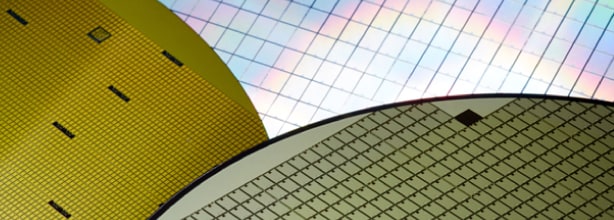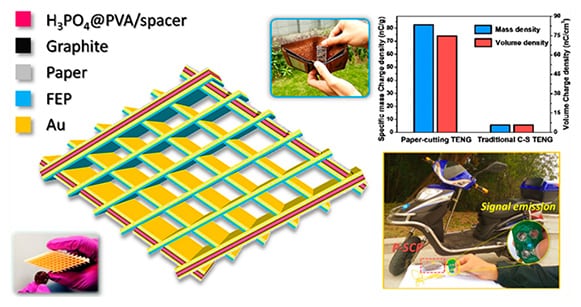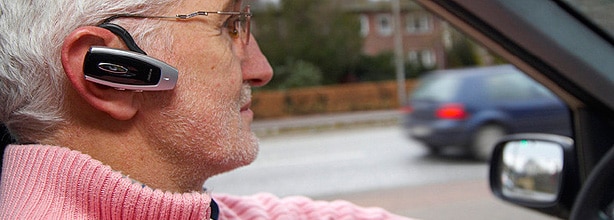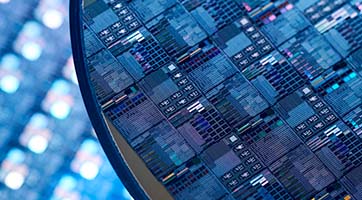
- Semiconductor Technology Now
Science News
Ultralight Paper-based Self-charging Device
July 18, 2017

|
The modern world is flooded with electronic devices, including smartphones, tablets, and all kinds of sensors. Many of these devices are being interconnected via the network so they can autonomously control each other, quickly turning the Internet of Things (IoT) into a reality.
Every aspect of our lives is being digitized and networked at an astonishing speed, but there remains one critical problem-that of the power source.
All mobile electronic devices need batteries, but the advancement of battery technology has lagged far behind that of semiconductors. Although mobile microprocessors today consume far less power than before, heavy smartphone users still have to carry battery packs around.
However, the need for external batteries may disappear once "energy harvesting" becomes prevalent. It refers to a group of technologies designed to collect and aggregate small amounts of environmental energy, such as heat, radio waves, light, vibrations, etc., with the purpose of converting it into usable power. Solar cell is a kind of energy harvesting device, too.
Another energy harvesting technology that has come into the spotlight in recent years is triboelectric nanogenerator (TENG), a technology that converts vibrations into energy. Specifically, it uses the friction of polymer and other materials to generate electricity.
A team of Chinese researchers led by Dr. Zhong Lin Wang and Dr. Chenguo Hu developed a paper-based self-charging device, which is made of paper strips interlaced into a rhombic grid pattern. The frame uses gold- and graphite-coated sandpaper as a substrate, and the inner grid is made of paper coated with gold and fluorinated ethylene propylene (FEP) film.
Previous TENG devices were acrylic-based and heavy, and it took several hours to charge a small electronic device such as a sensor. The newly developed paper-based device generates 15 times more electricity, and charges small devices such as a wireless remote, temperature sensor, or electric watch in a matter of minutes. The research team suggests placing the device in a wallet to charge wearable devices, for example.
As smart devices keep on evolving to require only a fraction of the power they use now, coupled with the advancements in self-charging units, we may be rid of external battery packs sooner than we think.



















